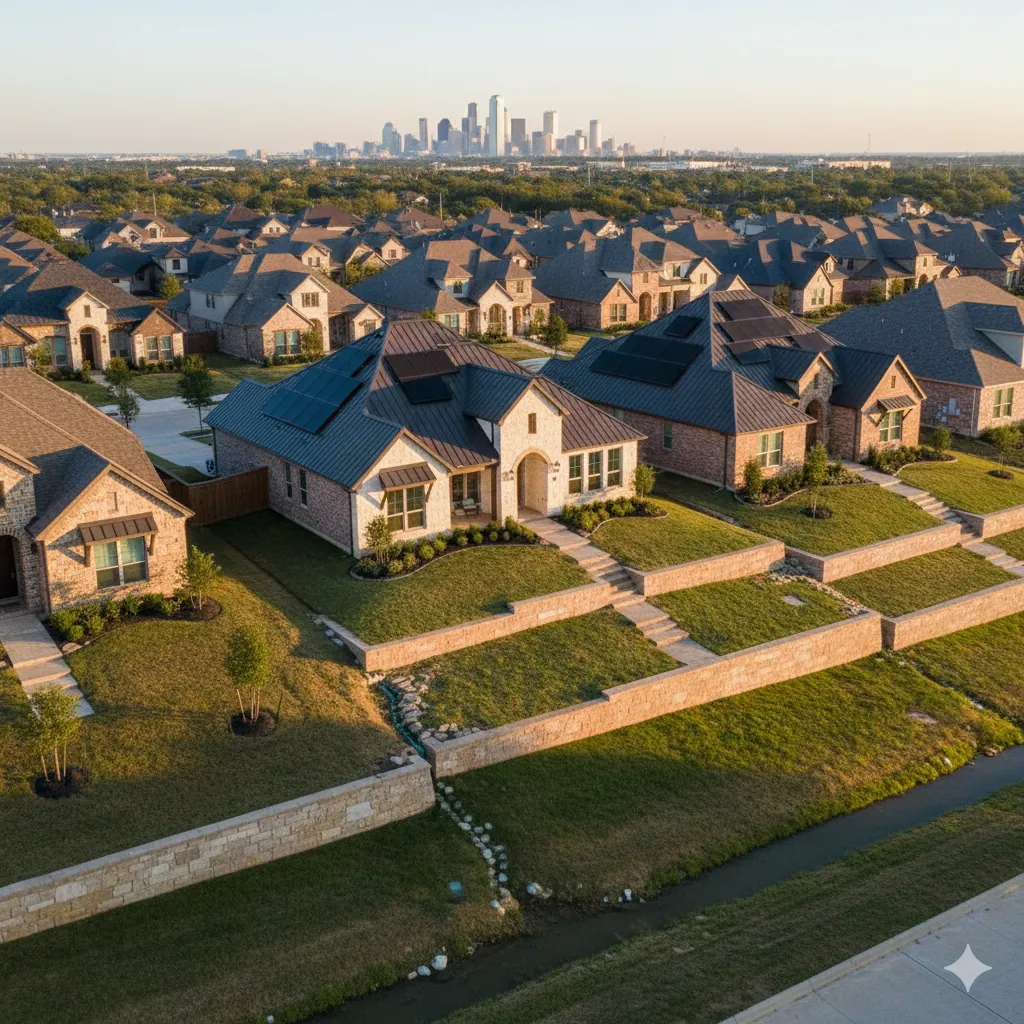
How Climate and Weather Risks Are Changing Homebuying in Dallas–Fort Worth (2025
How Climate and Weather Risks Are Changing Homebuying in Dallas–Fort Worth (2025 Update)
By Steven J. Thomas

In 2025, Dallas–Fort Worth homebuyers aren’t just comparing prices and neighborhoods—they’re also weighing climate and weather risks. From rising home insurance costs to floodplain maps and extreme heat, environmental factors are shaping decisions across the metroplex. Whether you’re a buyer or seller, understanding these risks can help you protect your investment and make smarter moves in today’s market.
Direct Answer
In Dallas–Fort Worth, climate and weather risks in 2025—like rising insurance premiums, severe storms, and updated FEMA floodplain maps—directly affect homebuying decisions. Buyers are prioritizing homes with energy efficiency, storm safety features, and lower insurance risk zones. Sellers can stay competitive by highlighting upgrades and providing neighborhood reports.
Neighborhood Spotlights: How Local Areas Are Adapting
Arlington & Grand Prairie (Flood Risk Awareness)
These cities include areas near the Trinity River that have seen updated FEMA floodplain maps. Buyers are asking about flood insurance requirements and home elevation. Sellers here benefit from disclosing mitigation efforts—like French drains or sump pumps—to reassure buyers.
Frisco & Prosper (Heat-Resilient Homes)
In fast-growing northern suburbs, demand is strong for homes with energy-efficient HVAC systems, radiant barriers, and smart thermostats. Rising summer heat has pushed energy costs higher, making efficiency a selling point. Explore new construction options that include these features.
Fort Worth Westside (Storm Preparedness)
Neighborhoods west of downtown have attracted buyers who want modern roofs, impact-resistant windows, and proximity to emergency services. Highlighting roof upgrades and insurance discounts can help listings stand out.
[Pro Tip: Sellers can use the Home Seller Score to understand how local risks affect value: ]
Local Market Trends (Fall 2025)
As of October 2025:
Median Home Price: $425,000 (up 3.8% YoY – NTREIS, Sept 2025)
Average Days on Market: 42 days
Insurance Premiums: up 11% YoY across Texas (Texas Department of Insurance, Sept 2025)
FEMA flood maps updated for parts of Dallas and Tarrant Counties (2025 release)
According to a recent Texas A&M Real Estate Research Center report, “Climate risk is becoming a factor in homebuyer negotiations, with premiums and energy efficiency influencing final offers.”
Cost Breakdown for Buyers and Sellers
Insurance Premiums: $2,000–$4,500 annually depending on risk zone
Storm-Resistant Roofs: $12,000–$20,000, often recouped in resale value
Energy Efficiency Upgrades: $5,000–$15,000 with ROI in reduced energy costs
Flood Insurance: $700–$2,000 annually if required
Buyers increasingly factor these costs into affordability, while sellers can boost appeal by addressing them upfront.
Builder & Community Insights: Know the Competition
Builders in areas like Celina, Mansfield, and Melissa are designing homes with:
Spray foam insulation for efficiency
Impact-resistant shingles
Smart irrigation for water conservation
Many also offer incentives like closing cost credits or energy-efficiency packages. Learn more about how to compete with builder perks through the New Construction Rebate Program.
Financing & Incentives That Attract Buyers
Some lenders in 2025 are offering “green mortgage” programs that reward buyers for choosing energy-efficient homes. Sellers can sweeten deals by offering credits toward insurance or energy upgrades.
For buyers, getting pre-approved helps clarify budget adjustments for insurance and utilities.
As one local lender shared, “Factoring in energy and insurance costs alongside mortgage payments helps avoid surprises down the road.”
Conclusion
Climate and weather risks are no longer side notes in the Dallas–Fort Worth housing market—they’re core to how buyers and sellers make decisions in 2025. Insurance premiums, floodplain maps, and heat resilience now influence home values as much as location and square footage.
Start by checking your Home Seller Score.
Explore rebate programs that offset builder incentives.
Download the Lone Star Living App to find homes with energy-efficient features.
Key Takeaways
Insurance costs and climate risks impact affordability in DFW.
Floodplain maps, storm safety, and energy efficiency affect buyer demand.
Builders are marketing climate-resilient features as a key selling point.
Sellers gain advantage by disclosing upgrades and offering credits.
Buyers should factor insurance and utilities into total homeownership cost.
FAQ: Climate & Weather Risks in DFW Real Estate
Are home insurance premiums rising in Dallas–Fort Worth?
Yes, average premiums rose 11% YoY in 2025, largely due to storm claims and higher rebuild costs.
Do flood maps affect home values in DFW?
Absolutely. Updated FEMA floodplain maps can impact insurance requirements and resale value.
What features help homes sell faster in 2025?
Impact-resistant roofs, efficient HVAC systems, and energy-saving features attract more buyers.
Should I avoid buying in flood zones?
Not always—proper mitigation and disclosure can still make these homes good investments.
Can sellers offset buyer concerns about climate risks?
Yes, by providing recent inspection reports, upgrade receipts, and offering closing credits.
Where can I find climate-resilient homes in DFW?
Download the Lone Star Living App to view homes with energy-efficient features.